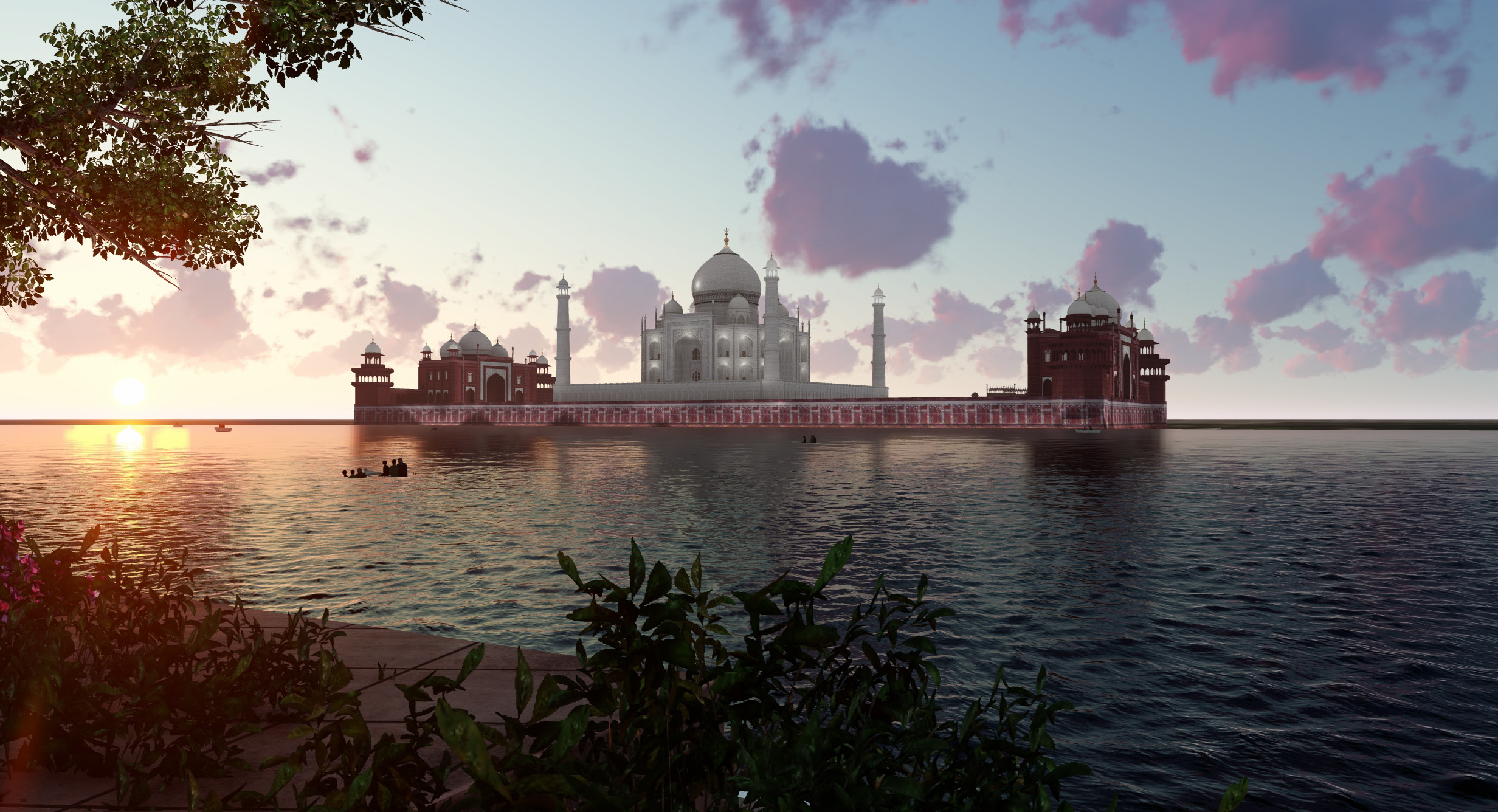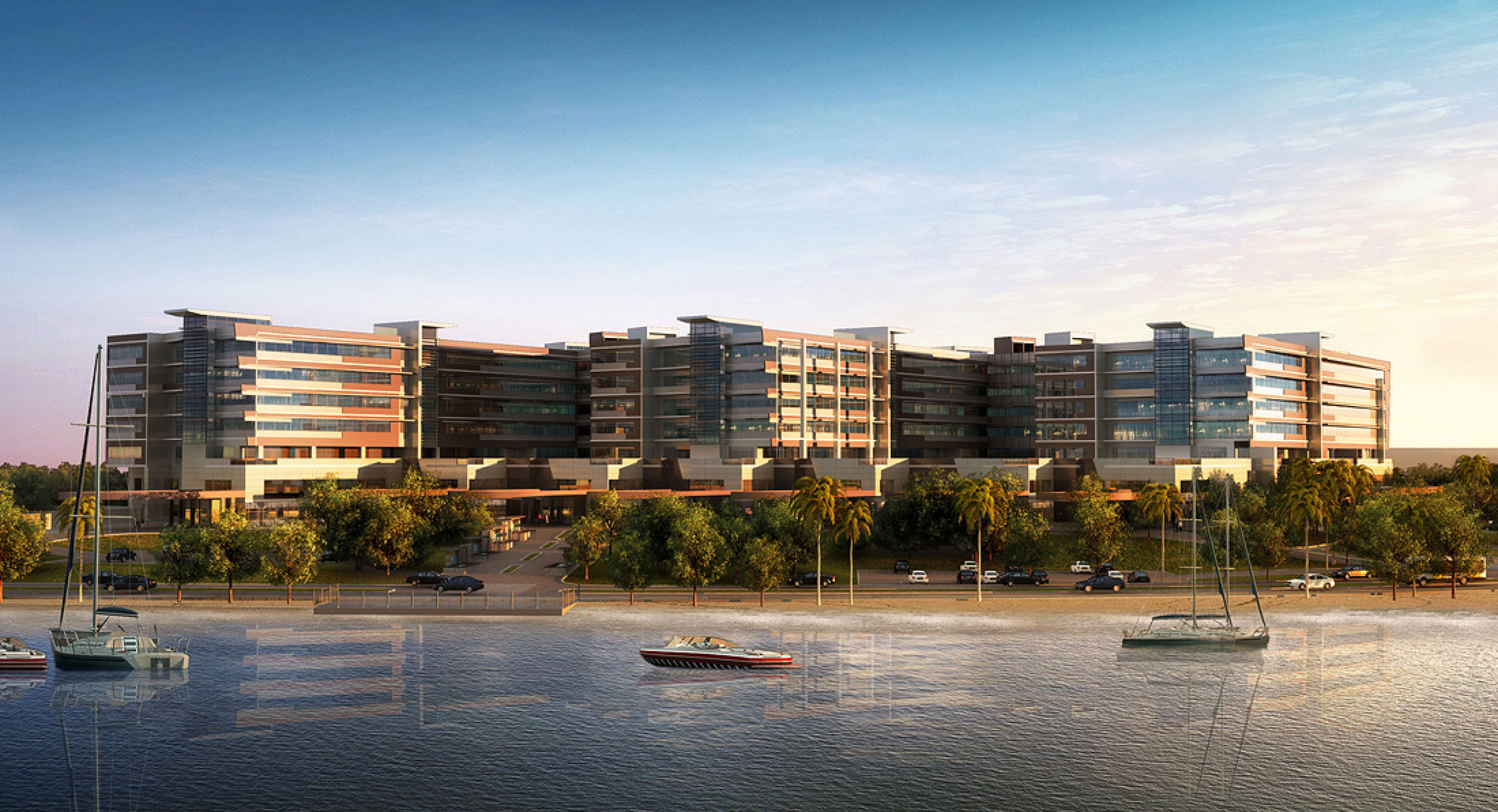
UNESCO World Heritage Site Development: The Taj Mahal HKS Vision to Pump New Life into India’s Iconic Taj Mahal
Agra, Uttar Pradesh, India
The Challenge
The Taj Mahal has long been recognized for its incredible beauty and architectural merit. Completed in 1653 and commissioned by the Mughal emperor as a tomb for one of his favorite wives, Taj Mahal was named a UNESCO World Heritage Site in 1982. As a national symbol of India, it welcomes millions of visitors each year. As with similarly famous, popular, and fragile sites, the annual influx of tourists imperils the physical fabric of the monument. Visitors are currently restricted to the neo-colonial version of the Mughal Garden that dominates the foreground of the Taj’s ubiquitous imagery for viewing the mausoleum. However, it is the larger cultural landscape of the river Yamuna and its flood plain, rural hamlets and farm fields, the streets and open spaces adjoining the riverfront that offer the best vantage for best viewing the monument.
HKS’ main objective is to plan and promote tourism at Taj Mahal that aligns with a preservation plan for the monument while creating avenues for community engagement – and at the same time, positioning Taj Mahal as a catchment area for monuments in the vicinity
The Design Solution
Reviving the forgotten story of the Yamuna riverfront, HKS proposed a riverfront (pedestrian and boat) trail that begins with the Taj Mahal. It connects to other monuments and open spaces along the river that will be developed as public recreational spaces. The river-walk aims to activate the public realm that connects people with the river visually and physically at strategic locations. The trail with the active public spaces will form the Taj Nature Park, which includes educational installations, a sculpture park, open-air amphitheater, viewpoints to Taj, food and retail, sports, grasslands, wetlands and marshlands. An integrated Taj Orientation center that houses a craft bazaar, food and retail aims to create job opportunities for the community.
HKS’ designers addressed overcrowding with strategies to revamp the circulation and access points for tourists
The Design Impact
The development along the river with the additional tourism product offerings will help increase overnight visitors to Agra city while dispersing crowds at popular destinations in multiple locations. The design helps stimulate the wellbeing of residents and improves the perception of safety around their neighborhoods. Ecologically sensitive design strategies restore the aquatic habitat, improves the terrestrial habitat and improves the quality of River Yamuna, which is a major source of sustenance for many neighboring towns and cities.

Project Features
- Taj Orientation, Interpretation & Convention Center incorporates technology to enhance the site arrival and experience
- Development of Yamuna Riverfront walk as an activated public space
- Revival of the city of gardens by integrating the existing gardens along the river, strategically curating cultural/recreational activity
- Taj Nature Park provides natural recreational activities while offering brilliant views of the monument
- Agra City Museum educates visitors of the history of Agra city and its development over time





